The new book by New York Times Bestselling Author Christopher Paolini is an epic science fiction story. To promote To Sleep in a Sea of Stars (in Dutch: Slapen in een Zee van Sterren) the author, who came to fame with Eragon and the following books in the Inheritance Cycle, embarked on a virtual worldwide press tour. Joany pointed her webcam towards America and spoke with Christopher about his work, the challenges of writing every day and his switch from epic fantasy to epic sci fi. Read our Interview with Christopher Paolini!
Also read the second part of our talk with Christopher.
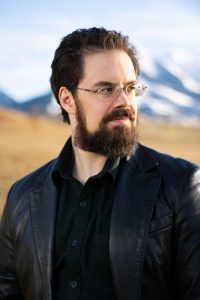
In To Sleep in a Sea of Stars we meet Kira Navárez. She is a xenobiologist on a spaceship, tasked with the job to identify planets that have not yet been colonized and to discover whether they are useful for humans. After years of faithful service, Kira is fed up with the constant space travel and separation from her boyfriend Alan. She is ready to end her career and settle down.
But before that, Kira has one last planet to inventory. It’s a routine mission and she should be back with Alan in a few days. But when she arrives on the planet, things go wrong. Kira falls, rips her protective suit and accidentally touches an unknown object – the most dangerous thing that can happen on an exploration mission. Not much later she is found by a colleague and taken back to the spaceship. But something has been awakened in her…
- Thank you so much for making time for us today, Christopher. We will talk about your new book – To Sleep in a Sea of Stars. It has just been released in Dutch here in the Netherlands; I have it here with me. In Dutch it is called Slapen in een Zee van Sterren.
Christopher Paolini: How many pages is it in Dutch?
- Let me see, it’s around 869 pages.
Very close to the English version, then. That’s just a hair longer, 878.
- To Sleep in a Sea of Stars is written in the genre science fiction. As a very well-known fantasy author, what made you switch to science fiction for this story? What inspired you to write sci fi?
I wanted to write science fiction because I love learning about the universe. I find it amazing that we exist in this universe. If I had the choice, I’d love to go out and explore the galaxy, the Milky Way, and travel around and see what’s out there.
- What fascinates you most about space?
Probably just the sheer possibility. When you have so much, well, space, even the most improbable things become possible. Life is an improbable thing as far as we know, yet we know it exists, we know it’s possible. I would love to have the freedom to go out there and see what exists out there.
- How did you go about researching the technology that went into writing this book?
I did a lot of reading, online and elsewhere. There’s some great resources on a website called “Atomic Rockets”, which is geared specifically towards writers who want to create realistic science fiction. I decided early on that I wanted to stay as close as possible to physics as we know it. That meant I had to educate myself on different questions: how would spaceships work? How would combat in space work? Where might computers be going, where might biotechnology be going?
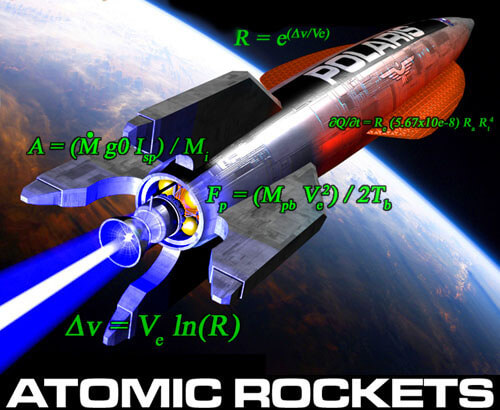
The thing that took the most time was trying to invent a system of faster-than-light travel (FTL). I knew I needed it for the story I wanted to tell, so I had to invent this travel system that hadn’t been used by any sci fi franchise that I was aware of, that didn’t contradict physics as we know it, and, most importantly, that didn’t allow for time travel. Most of the FTL technologies you see in popular science fiction would allow for time travel. That’s a consequence of general relativity, special relativity, all the stuff we know from modern physics. If you can go faster than light, you’re traveling through time. I don’t have anything against time traveling as a plot device, but I didn’t want my “cars of the future”, so to speak, to allow for time travel. So that was a hard thing to find, actually. I managed to find a guy by the name of Gregory Meholic, which I’ve mentioned in my afterword. He is a rocket engineer and scientist. He’s done some work in theoretical physics, and he and some other people have developed this theory which he was kind enough to walk me through. That theory formed the basis for the FTL-system in the book.
I spent an entire year doing this research, and especially the FTL. The reason I was ready to make that commitment is because To Sleep in a Sea of Stars is the first book in what I’m calling the Fractalverse. The Fractalverse includes the real world, everything that’s actually happened, the distant past and the far future. Basically any story that I want to write that’s not explicitly fantasy can fit into the Fractalverse. To Sleep is essentially a stand-alone novel, but there will be lots of stories in the Fractalverse that will tie into it.
- That sounds amazing, that’s very broad.
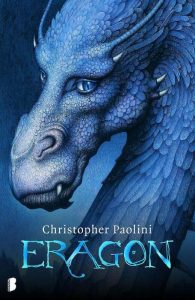
I spent so much time working on the world for the Inheritance Cycle – the Eragon novels – that I didn’t want to do all that work for a book that I would walk away from and never write about again. I wanted to create a setting that was also a framework for other stories.
- Within that framework, would you still stick with the genre of science fiction? Would you, for example, focus on one planet within that system and develop that?
Everything. It’s a giant bucket for every type of story I want to tell. I personally love stories that interconnect in interesting ways, so there will be ongoing themes, ongoing events and stories that people will care about, I believe.
One of the risks of a series is that when you get several books into a series, it becomes very hard for a new reader to pick up a book and start reading it. There’s a huge psychological hurdle to get over when you’re a new reader starting on book ten. What I want to do is to make sure each of these books works for someone who isn’t familiar with the large edifice of the Fractalverse, but at the same time make it so that every story still supports, builds and grows it.
- So it’s very limitless in that way.
That’s the theory, at least.
- We’ve briefly talked about the differences and similarities between fantasy and science fiction. What would you say the biggest difference is between writing within those genres?
It depends on what type of fantasy or sci fi you’re writing. For me, the biggest differences were firstly getting to use a modern vocabulary. Which was very nice, because I spent over ten years working with a fantasy vocabulary, which for me meant an archaic vocabulary.
Secondly, I would say that the technology of science fiction imposes certain restrictions you don’t have in fantasy. It’s not because everything is possible with magic. I mean more that if you’re trying to go from one place to another in a fantasy story and you need to go faster, you can always have your characters run faster, you can always have your horses get spurred on a little harder. There’s always a little bit of wiggle room. But with machines, that’s much less so. At a certain point they hit a hard limit and they just will not go any faster. The technology will not allow for it, or they can’t do what you’re asking of them. That becomes a certain limitation on the storytelling. Which is not bad, it’s just different.
- To Sleep in a Sea of Stars is mostly adult-oriented, while the Inheritance Cycle has been labeled Young Adult. Why this switch in audience?
For me there is no switch. I wrote the Eragon-novels not to make them YA, but to write the best version of that story I could. Since the main character is under 18, that automatically makes them YA, according to the publishers. I would say the final book of that series could easily be shelved in Adult Fantasy.
I’m writing stories that mean something to me, that really touch me. And I think readers will react to that as well. I may write YA again in the future, in fact I’m pretty sure I will. But again, it’s just determined by what each individual story needs and what I want to do with each one.
That said, I am aware I do have a lot of younger readers, even now. I personally would not give To Sleep in a Sea of Stars to someone who is 8 or 10. I would say, depending on the reader, if you’re fourteen or sixteen or up, you’ll probably do just fine with this. It depends on the level of the reader and how comfortable their parents are with, say, adult language.
- Is it mostly the language which makes it more suited for adults, or is it also the themes, events happening, etc.?
I mean, some of the themes, although it has a lot of the same themes which I wrote about in the Inheritance Cycle, are things I think about and care about. There’s some adult language, there is a little bit of sex in the book (not gratuitous) and of course there’s quite a bit of action and fighting at times. But that’s true for my fantasy as well.
- To Sleep was a very long journey to write, wasn’t it?
I first got the idea for the book back in 2006, 2007. I then focused on finishing the Inheritance Cycle. I actively started researching To Sleep in 2013, so yeah, 7 years of work on this book. That includes some major revisions and rewrites, completely changing large portions of the story. I’m glad I did it, it was what was needed for the story. But I hope I never have to do it again for a future book, because it was exhausting to a large degree. That said I am happy with where the book ended up at.
That’s why I tell aspiring writers that when they are about to dive into a new book, or any book, that they should only do that when they really, truly care about the subject material. If you’re not passionate about what you’re writing, you’ll have extreme difficulty sitting down every day and working on it for months, years and possibly longer. The people in my family live long lives, but no matter how you cut it, seven years is a long chunk of your life. So you have to be truly committed to whatever it is you try to create.
- Were there any hurdles or obstacles, aside from the editing that you didn’t expect while going in?
Another hurdle is that I had gotten a little rusty with my storytelling skills while working on the Inheritance Cycle. During those ten-or-so years, I wasn’t plotting out a lot of new stories. When I started To Sleep, I wouldn’t say I was cocky, but I was definitely overconfident. I had this feeling of “I’ve done this before, and it was successful, so I know what I’m doing and I don’t need to do a lot of the things I needed to do with Eragon to get this book started”.
And the truth is, I really did need to do those things. I ended up writing a first draft where a big portion of the book just didn’t work, because I didn’t really understand what I was trying to do. That was incredibly frustrating. It took a lot of energy and thought to understand where I got wrong and fix it. For anyone who’s read the book: everything after the first quarter of the second section of the book was not in the first draft.
- That’s a big change you’ve had to make.
Right. All the places the characters visit were not in that draft. All of the things that happen, even some creatures that show up, weren’t in the book. So it was a massive rethink, a massive change.
- Where did you find the inspiration for the creatures we meet in the book?
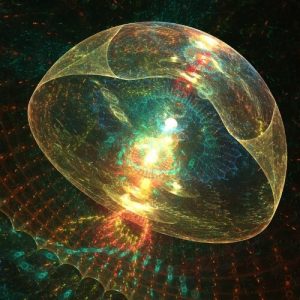
We meet two different types of creatures in the book. The main types are called “Jellies” in English, because they have tentacles and remind humans a little bit of jellyfish. I wrote them that way because firstly, I figured if I was going to write epic science fiction, I had to have some tentacles. But secondly, I read an article a number of years ago about how the octopus is the closest thing to an alien we have on this planet. The brain of the octopus has three lobes and an esophagus goes right through the middle of the brain. The arms are semi-autonomous: they have neural clusters which lets them act with a certain amount of intelligence. I was really intrigued by that. As for jellyfish, they have incredibly complicated life-cycles, which was another big element that came into the design of the species. I used some of these elements to build off in new directions.
A major theme of the book is how characters deal with their bodies, when bodies don’t behave the way you want them to. We’ve all had that experience: you get sick, you break a leg, your body doesn’t do what you want it to do, physically or emotionally. The aliens that I have are able to change the shapes of their body through technology and through biology in a way humans are unable to. That was an interesting way to play with that.
- So you took a lot of inspiration for the creatures from our natural world. Was it difficult to get into the mind of creatures that are so different from our human experience, from our body?
Yes and no. In some ways it might be completely impossible to do that, so I did the best job I could. I also believe that while there are lots of different creatures on Earth, in lots of different shapes and forms, they are all driven by the same basic urges: the need for food, the need to reproduce, the need to have shelter and safety, all of that. Those urges and needs tend to lead to certain behaviour that is very understandable for us. I can’t pretend to know what’s going through a crocodile’s mind. But you can understand it and it does make sense. And with these aliens, they are physical beings with actual bodies. There should be certain understandable things and behaviour, even if their culture is radically different than ours. That’s where I concentrated on the biggest differences: their culture, their language, that sort of thing.
- In real life, the moment of us finding life in space might be creeping closer. What do you think our role as the human species will be when we do find life in space?
If there is life elsewhere in the universe, we have a duty to protect it, I think, as much as possible. But no matter what anyone might want or hope, humans are going to do what life in general does. We are going to expand until we fill every available space. That’s what life does. It doesn’t make us evil, it doesn’t make us wrong. Any animal would do that, even simple one-celled organisms do that.
Now we are self-aware, we can behave in a responsible manner that keeps us safe and keeps other species safe. But that’s what we’re going to do. And if we get the capability to start making settlements off-world, on Mars, Venus – or even outside of the solar system – we will spread across the whole galaxy. Even without the ability to travel faster than light, there is really good math that shows that humans would be able to colonize the whole Milky Way in a fairly short period of time, on a galactic scale.
- So you think our future is to spread out from our own planet and settle in outer space?
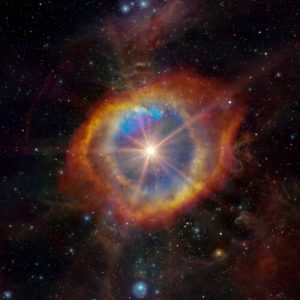
If it’s not, we’ll die. Because the sun will expand, it’ll envelop the Earth, and that’s it. We all face death individually, but as a species, I don’t think we’re willing to quite accept that yet. To me, it’s not really a choice. We either leave or we die. And it’s either from the sun, or an asteroid, or something else that will happen to the Earth. It’s inevitable over a long enough period of time.
If the option were open to me, or my children, I would say: go out there and explore. It’s what all our ancestors did. Moving to new lands and forming new lives. I love the Earth, it’s a haven, a green jewel glittering out in the blackness of space, it’s a precious thing. We won’t find this out there, as far as we know. But that doesn’t mean that our future isn’t out there.
- We’re already facing challenges now here on Earth, with preserving our nature and keeping the planet habitable for us in the future. Do you think science fiction has a role in envisioning that future and our role in it?
Absolutely. It’s played that role for a long time and I think it will continue to play that role. I do think it’s important that there is fiction, especially science fiction, that is optimistic. If all you read is doom and gloom – if it’s all pessimistic, cynical, looking down – then that’s how you’re going to feel. You’ll feel hopeless, as if there isn’t a solution and life isn’t worth living. Personally I don’t agree with that, and that’s why my work is ultimately optimistic. I put my characters through the wringer, but I ultimately believe that we should have hope and optimism. I will never write a book that makes people depressed, because that’s not what I want to do. But yeah, we certainly have challenges. And knowing humans, we’re not going to do things perfectly. But I also don’t think that things will end up absolutely horrible either.
- We’ll find sort of a middle road and learn from our mistakes.
Yeah, we’ll get through. We’ll make lots of mistakes. Some things will get better, some things will get worse. And that’s life.
Click here for part two of our talk with Christopher.
Christopher Paolini is the author of the international bestsellers Eragon, Eldest, Brisingr and Inheritance, as well as The Fork, the Witch, and the Worm. His debut science fiction novel – To Sleep in a Sea of Stars – is now available. He resides in Paradise Valley, Montana, USA.
Slapen in een Zee van Sterren / To Sleep in a Sea of Stars is available in bookstores everywhere.
Modern Myths Shop
Slapen in een Zee van Sterren – € 29,99 Bol.com
Slapen in een Zee van Sterren – € 29,99 Amazon.nl
Paperback: To Sleep in a Sea of Stars – € 16,99 Bol.com
Hardcover : To Sleep in a Sea of Stars – € 22,93 Bol.com
Paperback: To Sleep in a Sea of Stars – € 13,79 Amazon.nl
Hardcover: To Sleep in a Sea of Stars – € 17,13 Amazon.nl
Do you want to read more interviews like our Interview with Christopher Paolini? Go to our section Interviews!
Interview with Christopher Paolini: © 2019-2024 Modern Myths
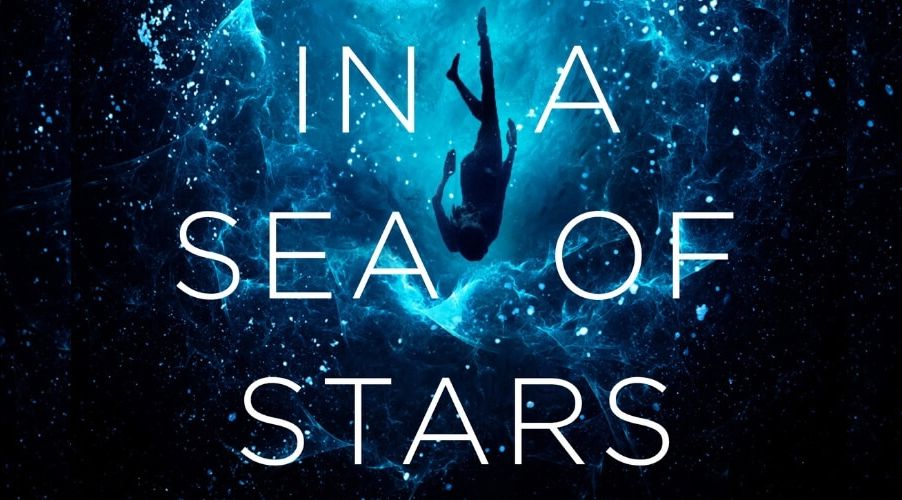

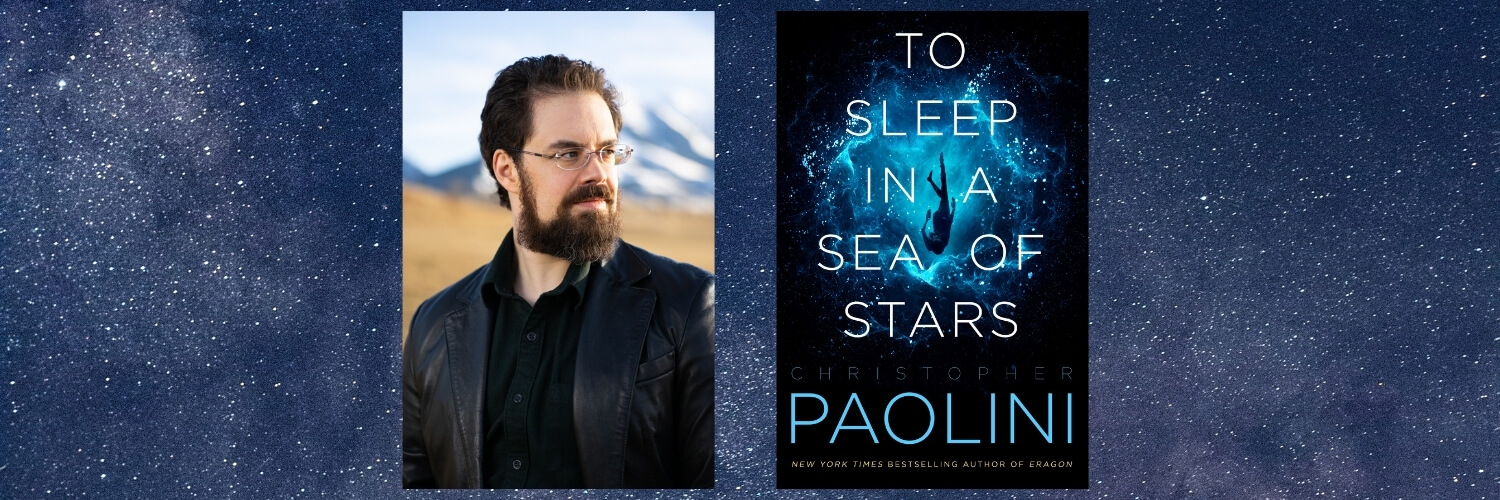

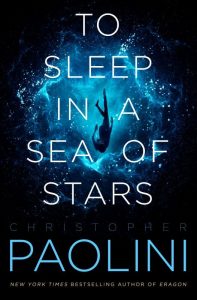
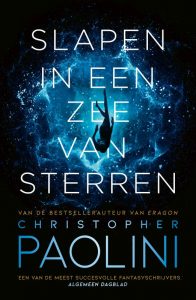

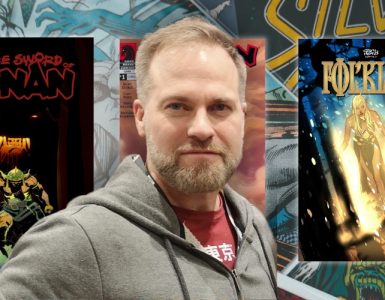
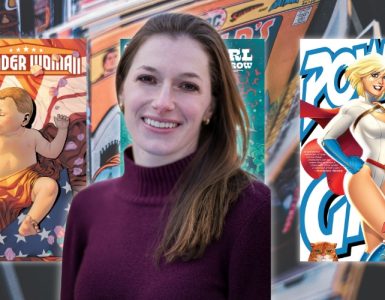


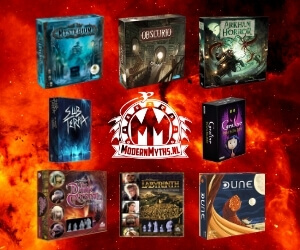
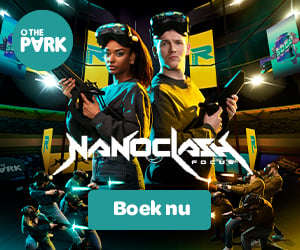
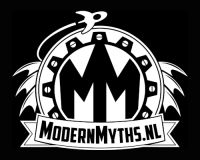
Reactie plaatsen